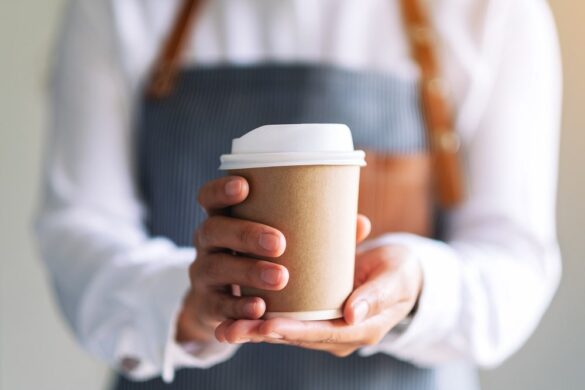Just about every coffee drinker has experienced some version of the following story:
You pull into your favorite fast-food breakfast restaurant for a breakfast sandwich or a donut or a pastry (or maybe all three) and a tall cup of hot coffee. You begin eating your breakfast in your car. You are driving down the street when you see a squirrel dash onto the pavement, and, having a kind heart, you hit the brakes.
At that moment you discover you weren’t really holding your coffee cup securely because it didn’t have a sleeve. You spill half the cup of coffee into your life and very shortly you are experiencing severe pain.
We have all heard horror stories about people who were severely injured when they were scalded with piping hot coffee. In the early 1990s, 79-year-old Stella Liebeck was a passenger in a car when she bought a cup of very hot coffee at a drive-through. The car wasn’t moving when she placed the cup between her legs and opened the lid to add cream and sugar. The entire cup of coffee spilled into her lap. In less than a minute, she had burns so severe that she would need skin graft surgery.
The temperature of Stella Liebeck’s coffee was hotter than the coffee made with most home coffee machines.
The coffee that caused Stella Liebeck so much grief was served to her in a styrofoam cup without a sleeve. When Liebeck later sued the fast-food chain to get her medical bills paid, it was revealed that there had been 700 incidents like hers over the past 10 years before her accident — and this giant fast-food chain had known about them and had decided it would be better to run with risk of an occasional lawsuit than to spend a penny more on each cup of coffee to serve it in a protective sleeve. After a very long trial, a jury awarded Stella part of her medical bills and $3 million in punitive damages that she did not live long enough to collect in full.
You might think, well, this was horrible but it won’t happen to me. I drink hot coffee, but it’s not that hot.
This scientific study shows that contact with any liquid that is hotter than 44.8 degrees Celsius (112.6 degrees Fahrenheit) causes pain. That’s a temperature about 18 degrees Fahrenheit or 10 degrees Celsius hotter than the hot water coming out of your faucets at home. Damage to your skin starts at about 43 degrees Celsius (109 degrees Fahrenheit).
Even before you feel pain, your skin can start burning. You can get a nasty burn from hot coffee that leads to peeling skin and infection and not even know it. But you can protect your fingers from burning and keep a better grip on your cup of coffee if you surround your cup in a sleeve.
You can find coffee sleeves under many different names. They are also known as coffee cup sleeves, coffee condoms, coffee cozies, hot cup jackets, coffee collars, cup holders, and paper zarfs. Most coffee sleeves are made of textured paperboard. The paper works as a protective barrier between your fingers and the cup, and the texture added to the paper gives you a better grip. And if you are the coffee seller, the coffee sleeve can keep your customers happily burn-free.
Coffee sleeves are a relatively recent innovation but they have quickly become a must-have for many.
Personalized coffee sleeves come in the colors and designs of your choice. Consumers appreciate coffee sleeves made from recycled material and are recyclable and biodegradable, so they know they’re using a product that is better for the environment than many other similar projects.

